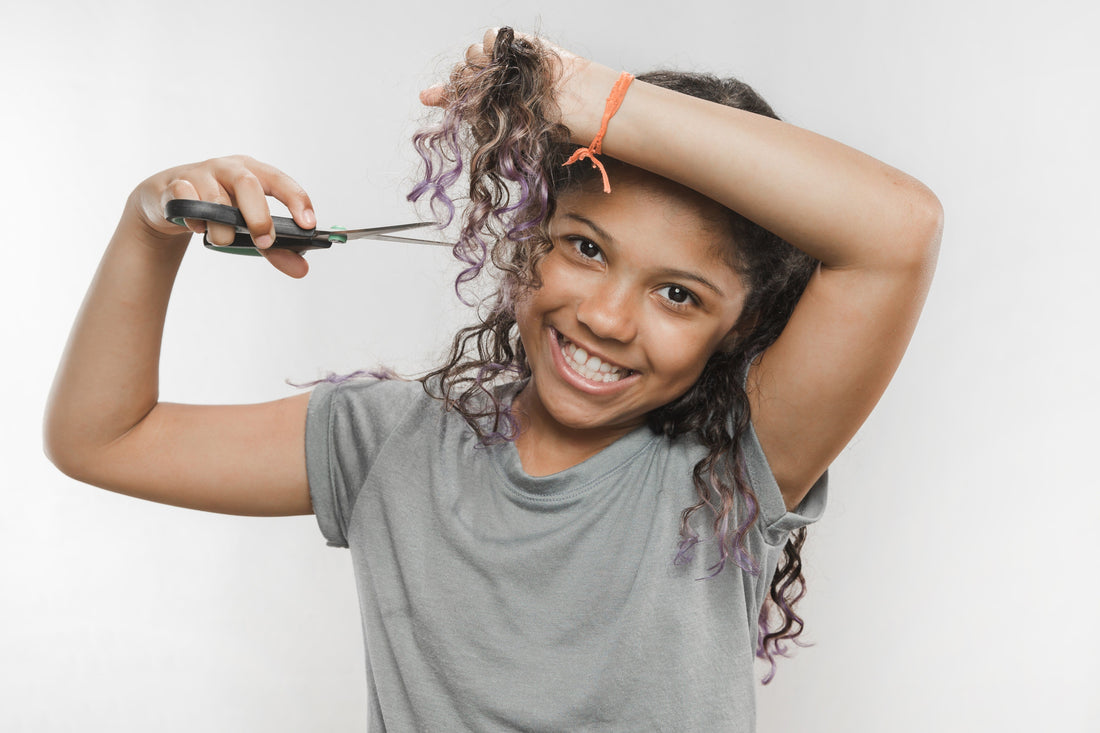You’ve mastered layered cuts, expert colorings, and smooth blowouts.
But when a client with curls walks into your salon — are you truly prepared to meet her real needs?
Unfortunately, most hairdressing schools offer little (or no) practical training on managing textured hair.
As a result, outdated techniques are often applied — with serious consequences for curl structure, definition, and client trust.
The truth is:
💬 Mistakes don’t come from bad intentions — they come from a lack of specific training.
But in today’s world, curly-haired clients are knowledgeable, demanding, and expect true expertise.
The smallest mistake can mean losing a client… and your reputation.
Let’s go through the 5 most common mistakes and — most importantly — how to correct them professionally.

Mistake #1: cutting curls wet, stretched, and with a comb
What often happens:
Hair is combed wet and taut, then cut section by section.
This method is perfect for straight hair — but catastrophic for curls.
Technically speaking:
Wet, stretched curls appear much longer than they really are.
Cutting them stretched destroys their natural spring, creating uneven shrinkage once dry.
Result:
Shorter-than-expected lengths
Imbalanced volume
Unpredictable and unsatisfying results
What an expert does instead:
Cut dry, on natural curls
Follow the “curl by curl” method
Respect the spring, direction, and density of each curl
See exactly how the final shape will look — no unpleasant surprises later!
At Kally Kurls Studio, this is a foundation of our professional cutting method.

Mistake #2: using heavy or silicone-based products
What often happens:
Salons use rich masks, heavy oils, or silicone serums designed for straight hair.
The goal is to "control frizz" — but the result is weighed-down, lifeless curls.
Technically speaking:
Curly hair needs hydration first, not heavy oils.
Silicones create a suffocating film, blocking real moisture from penetrating.
Result:
Curls collapse and lose bounce
Hair feels greasy or coated
Long-term: dehydration, scalp irritation, loss of definition
What an expert does instead:
Diagnose porosity first
Use lightweight, plant-based hydrating gels and creams
Seal hydration without overloading the hair
Prioritize breathable, natural ingredients that respect the curl
Kally Kurls Studio training teaches professionals how to select the right formulas for each texture and porosity.
Mistake #3: detangling dry or with the wrong tools
What often happens:
Detangling dry hair with fine-toothed combs or paddle brushes.
Ripping through knots without applying a slip product.
Technically speaking:
Dry curls are fragile and prone to breakage.
Rough detangling damages cuticles, creates frizz, and ruins the curl pattern.

Result:
Hair breakage
Frizz explosion
Client discomfort (pain, sensitivity)
What an expert does instead:
Detangle wet or very damp hair only
Apply a slippery product first (hydrating mist, leave-in, conditioner)
Use fingers first, then a wide-tooth comb if needed
Always start from the ends and work upward, strand by strand
Detangling is a delicate, technical step — not a rushed afterthought.
Mistake #4: drying curly hair like straight hair
What often happens:
Blow-drying with strong direct heat, no diffuser.
Moving the dryer constantly over the hair.
Sometimes even brushing while drying (!).
Technically speaking:
Curly hair needs time and stability to form a defined shape.
Strong airflow disrupts curl formation, dries the fiber too quickly, and creates frizz.
Result:
Puffy, undefined hair
Frizz instead of bounce
Clients leaving the salon disappointed
What an expert does instead:
Dry with a diffuser on a warm or cool setting
Place curls gently into the diffuser without moving them
Tilt the head forward to boost volume
Apply a hydrating gel before drying to “set” the curls without stiffening them
Drying is not just about speed — it's about preserving and enhancing the natural texture.
Mistake #5: not providing a home care routine
What often happens:
Clients leave the salon with beautiful curls… but no idea how to maintain them.
No product advice, no techniques explained, no routine suggested.
Technically speaking:
Without guidance, clients use the wrong products, wrong tools, and wrong techniques — undoing all your work.
Result:
Curls become dry, frizzy, and shapeless
Clients think the salon results were "temporary"
Loss of trust — and lost business
What an expert does instead:
Offer a personalized, simple routine: cleanse, hydrate, define
Teach basic gestures (detangling, drying, nighttime protection)
Recommend products that match the salon routine
Ideally, provide a written guide or a short follow-up message
When you invest in aftercare education, you gain loyal, grateful clients who return again and again.

Conclusion: true expertise means mastering curls — not improvising
Curly hair requires specific knowledge, precise techniques, and tailored advice.
Every detail matters — from the cut to the products, to drying, to client education.
The good news?
✅ Clients with curls are loyal to professionals who understand their needs.
✅ A professional trained in textured hair stands out immediately in the market.
✅ Small changes in your approach can create huge transformations in results and client loyalty.
At Kally Kurls Studio, we train professionals to become true experts in textured hair — with technical mastery, clear communication, and a passion for showcasing every curl.
🔗 Discover the Kally Kurls Studio professional training





